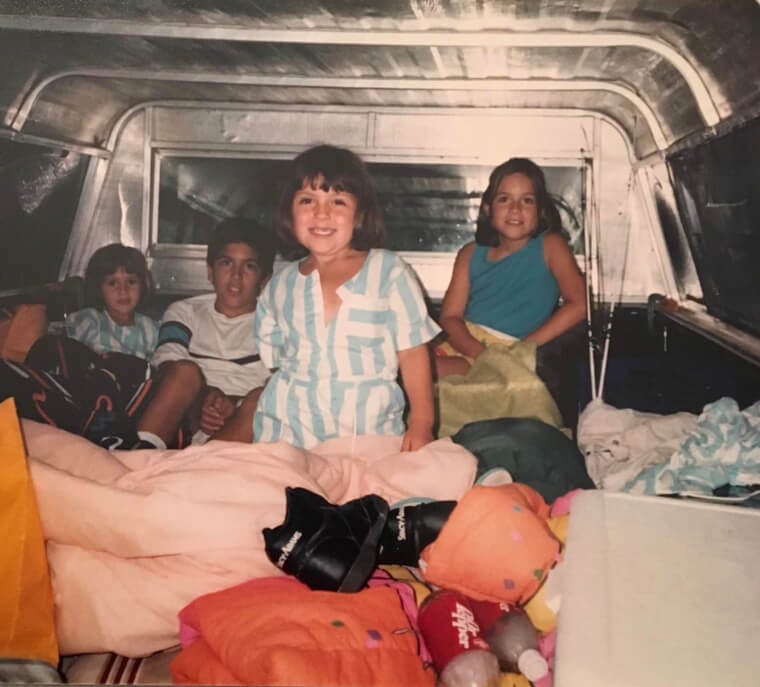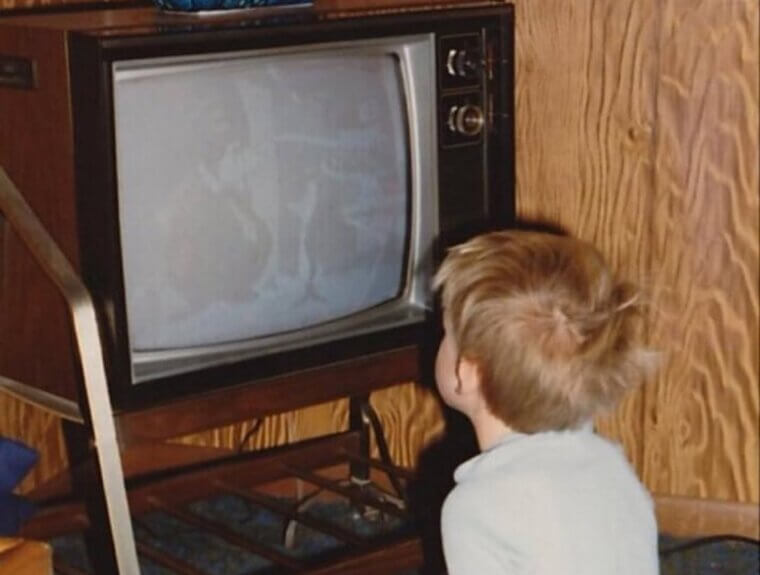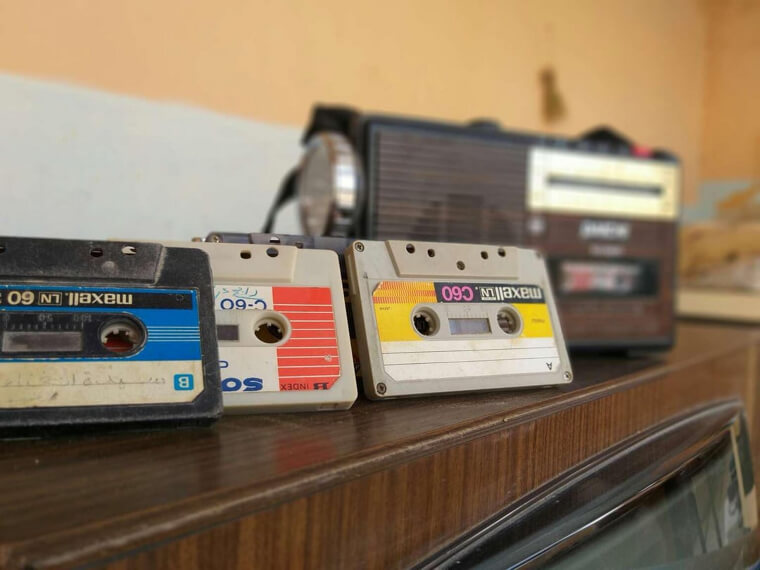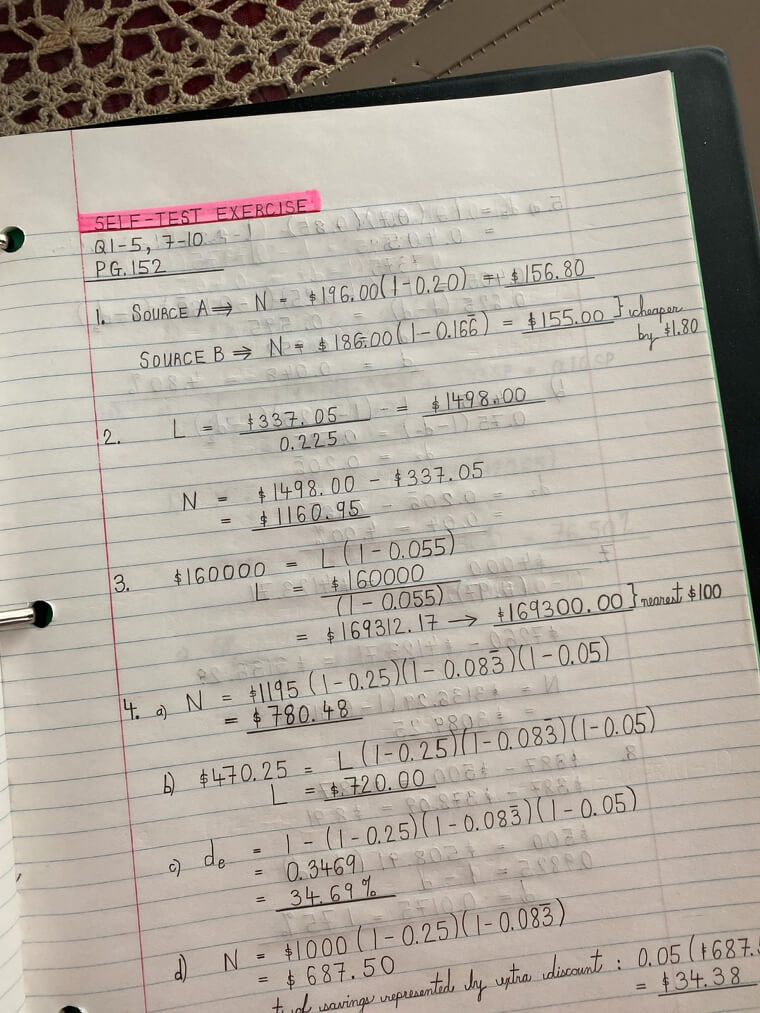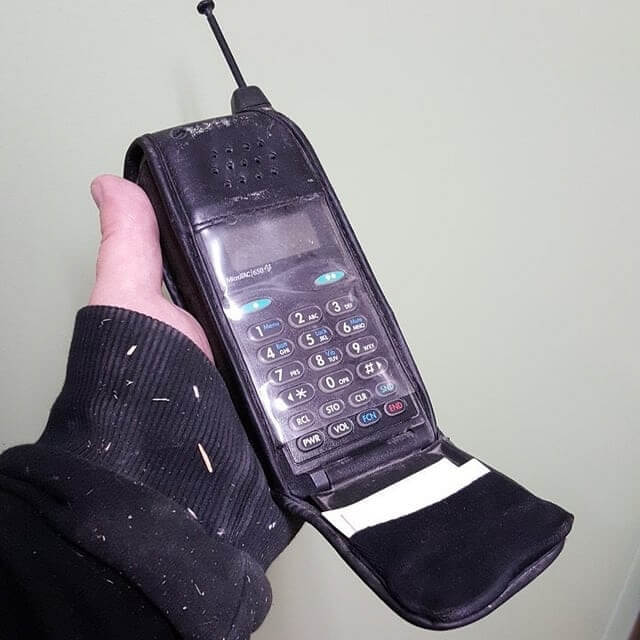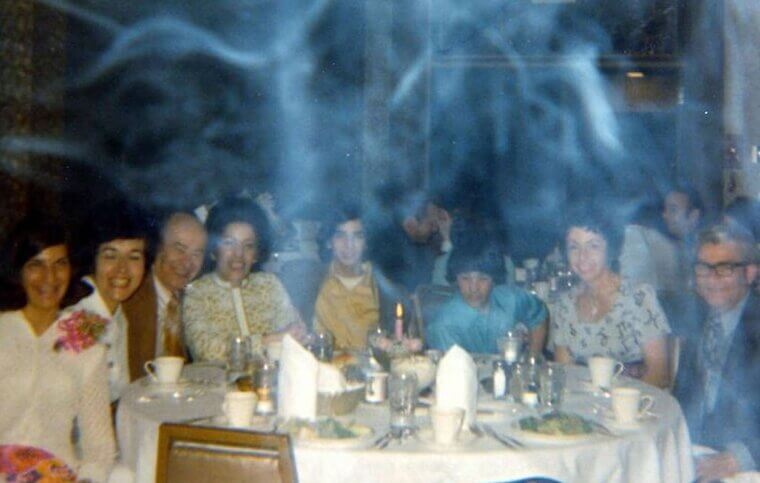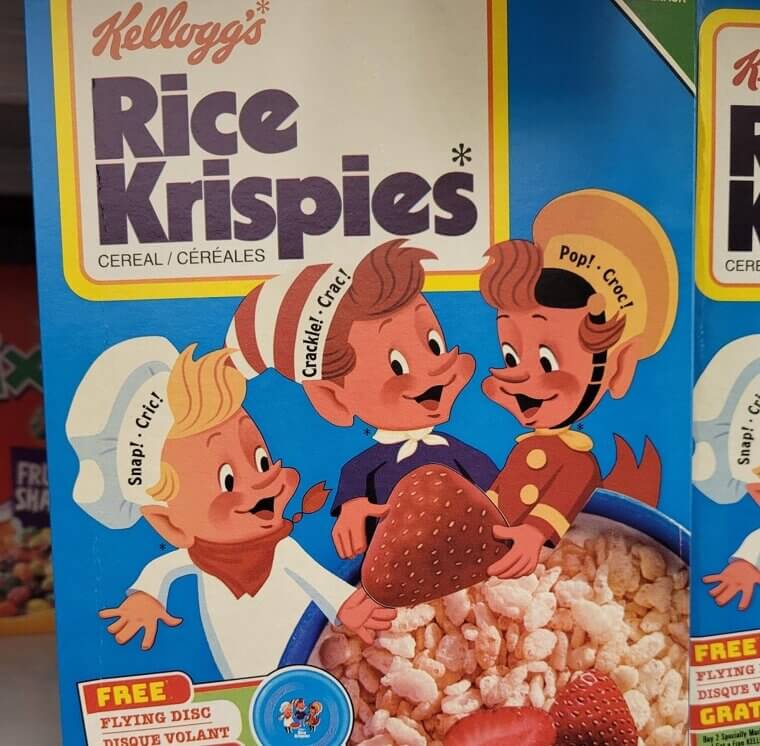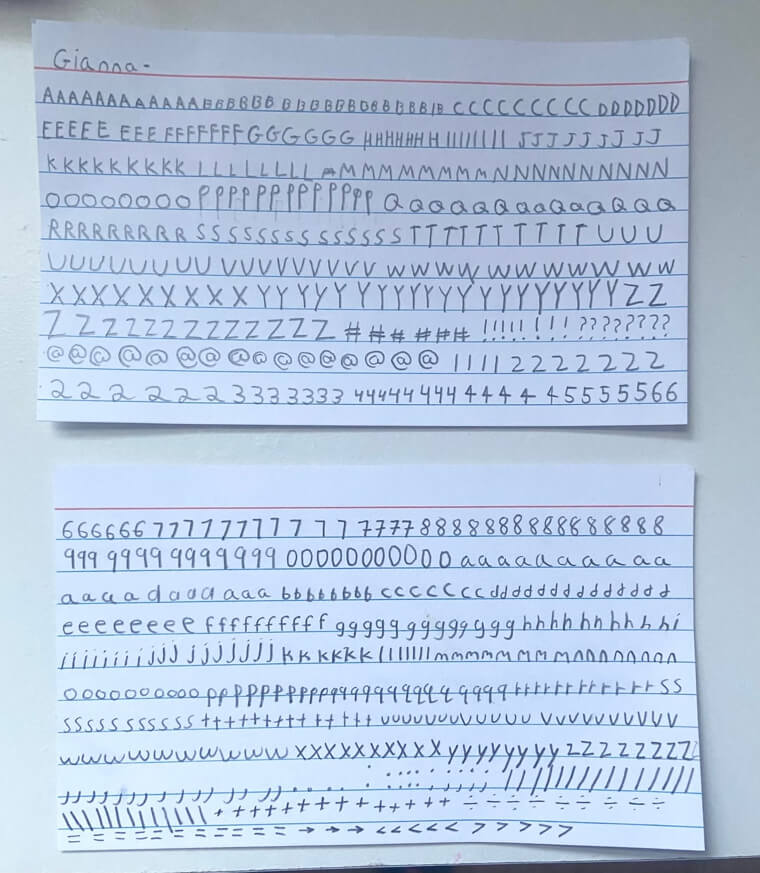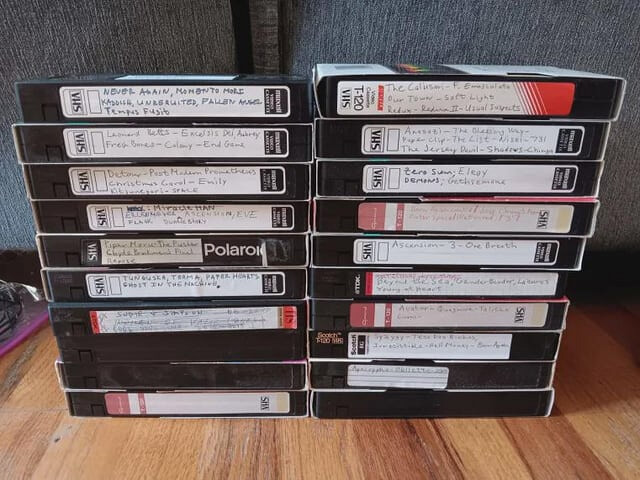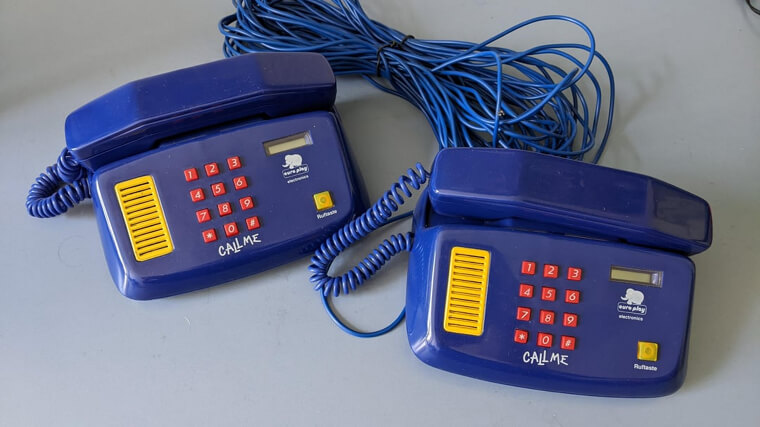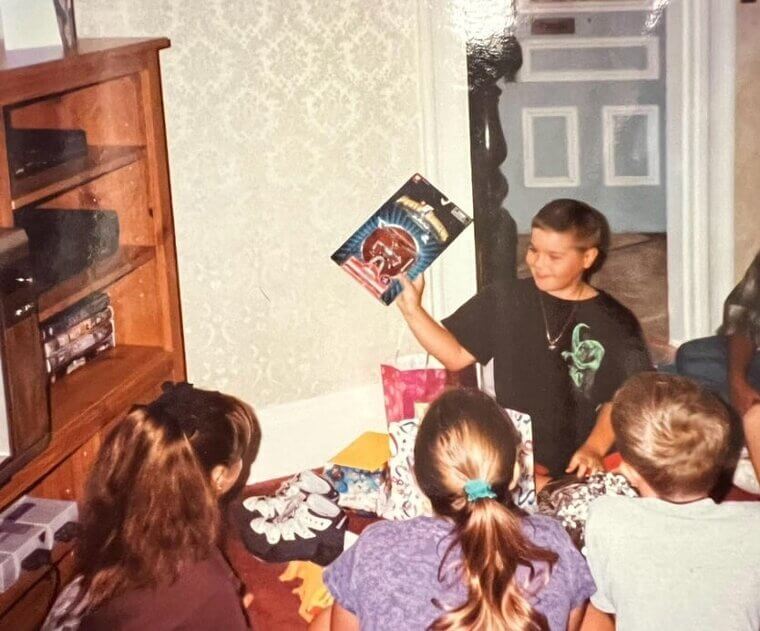Getting up to Change the Channel
Remote controls were not universal, and some families never owned one at all. If you wanted a different show, you walked across the room, gripped the chunky dial, and turned it until the loud click landed on a new channel. If the reception was poor, you fiddled with rabbit ears or added aluminum foil because everyone agreed it helped somehow. If multiple people wanted different channels, you held a family negotiation that the youngest child usually lost, earning them the job of human remote for the evening. Kids today cannot imagine interrupting comfort just to find something to watch. They would also be shocked to learn we only had a handful of channels anyway. Choosing TV was not an endless scroll of options. It was a small group decision that required effort, compromise, and standing up repeatedly. Somehow it still felt entertaining.
Riding in the Back of Pickup Trucks for Fun
If someone’s family had a pickup truck, riding in the open bed felt like the height of freedom. Kids sat on blankets, held onto the sides, and enjoyed the wind like it was a carnival ride. Nobody considered the safety implications. Today, this would lead to a lecture and possibly a ticket. Kids now wear full protective gear for a scooter ride. They would not believe we once treated pickup truck beds like VIP seating.
Fixing the TV by Smacking the Side of It
Kids today think technology breaks quietly and gets repaired by professionals. We fixed ours using the scientific method known as strategic smacking. If the picture started rolling, you hit the side of the TV cabinet until it stopped. If the sound buzzed, you tapped harder. Every household had a special spot on the wood paneling where the hit worked best, almost like a reset button made of force. Sometimes the picture snapped back instantly. Other times you had to adjust the rabbit ears while someone else performed the ritual tap, creating a tag team of improvised electronics repair. Kids now would never believe that expensive electronics once responded better to a good thump than to any official troubleshooting steps. It was not elegant, but it worked often enough that we considered it real maintenance. Today they handle screens like fragile diamonds. We treated ours like stubborn appliances that needed motivation.
Taping Songs off the Radio and Hoping the DJ Stayed Quiet
Creating a playlist today takes seconds. Creating one in our childhood required dedication, timing, and luck. You sat near the radio for hours with a cassette in place, waiting for the opening notes of your favorite song. The moment you heard it, you slammed the record button and prayed the DJ would not talk over the intro. Sometimes they did, leaving you with a tape that began with “And that was…” before the music kicked in. Other times you missed the first few seconds entirely. Each tape ended up with uneven volume, static, and abrupt endings when commercials jumped in early. Kids now would never believe we considered these flawed recordings priceless. They also would not believe siblings ruined half our tapes by yelling in the background at the worst possible moment. A good playlist back then felt more like a personal mission than a simple click.
Reheating Leftovers in the Oven
Before microwaves became a household staple, warming leftovers meant turning on the oven and waiting. Want last night’s spaghetti? Wait. Want pizza? Wait longer. You used metal pans without a second thought, and sometimes the leftovers came out hotter on the outside and still cold in the center. If you were hungry after school, you either ate something cold or committed to a long reheating process. Kids today expect instant warmth and perfectly even heat. We expected the oven to do whatever it felt like that day. Occasionally you forgot the food entirely and burned it, filling the house with smoke and triggering several loud opinions from family members. But the truth is, leftovers tasted better from the oven, even if we did not appreciate it at the time. Kids now would never believe food once required patience.
Writing Entire School Reports by Hand
Kids today have spell check, fonts, formatting tools, and printers. We had lined paper and hand cramps. Writing a school report meant filling page after page with neat handwriting, erasing mistakes carefully so the paper did not tear. Teachers insisted on legibility, which meant rewriting entire pages when your handwriting wandered or you accidentally smudged ink. If you spilled something on your work, you started over. Many of us learned early that neatness mattered more than creativity. Kids today would never believe we spent hours rewriting final drafts simply because the teacher said the margins were crooked. They also cannot imagine turning in work without a single typed word. For us, a long assignment meant sore fingers and a sense of accomplishment that felt strangely physical.
Memorizing Phone Numbers and Dialing Them Manually
Kids today rarely know their own phone number because their contacts are stored automatically. We carried dozens of numbers in our heads, from relatives to classmates to the pizza place. If you forgot a number, you walked to someone’s house or waited until you saw them. Long distance calling required planning and sometimes permission. Dialing took time because phones had rotary dials or buttons that clicked loudly. If you misdialed near the end, you started over. Kids now would never believe that remembering numbers was once a life skill. We had mental directories before digital ones existed, and knowing the right number felt powerful. Today they scroll. We dialed and hoped our finger did not slip.
Sitting in Restaurant Smoking Sections
Restaurants once had smoking and non smoking sections, although the difference was mostly imaginary since the smoke drifted everywhere anyway. Families sat down, opened menus, and pretended not to inhale too deeply as people lit cigarettes at the next table. Kids today would be horrified. They cannot imagine eating spaghetti while a cloud floated by. Back then it felt normal. You went home smelling like smoke, and nobody questioned it. Kids now would assume we are exaggerating, but many of us remember ashtrays on tables, giant smoke filled rooms, and the belief that air purifiers were unnecessary luxuries. It sounds wild, but at the time it was standard dining.
Letting the Phone Ring Endlessly Because We Did Not Want to Answer
Before caller ID, answering the phone was always a gamble. You had no idea who was calling. It could be a friend, a telemarketer, a relative with a long story, or someone selling siding. Sometimes you simply let the phone ring repeatedly while everyone ignored it. Other times you answered cautiously with a very formal “Hello?” just in case it was someone important. Kids today answer only if the name appears on screen. They cannot imagine not knowing who was calling or choosing not to pick up just because you were not in the mood. The suspense alone would overwhelm them.
Reading Cereal Boxes for Entertainment
Breakfast was not a multimedia event. There were no tablets, shows, or videos allowed at the table. Entertainment was the back of the cereal box. You read every word, solved mazes, studied nutrition charts you did not understand, and memorized trivia you forgot immediately afterward. If two kids wanted the same box, negotiations began. Sometimes you turned the box around mid meal to read the other side as if it were breaking news. Kids today would never believe cereal boxes once acted like morning newspapers for the younger crowd. It was simple entertainment, but strangely satisfying.
Practicing Handwriting Drills Until Your Hand Hurt
Schools once treated handwriting like a critical life skill. You filled workbook pages with loops, curls, and perfectly slanted letters. Teachers critiqued posture, grip, and spacing. Kids now mostly use keyboards and styluses. They cannot imagine being graded on penmanship or practicing cursive for hours. Back then, neat handwriting was seen as a sign of discipline. If your letters leaned too much, you redid them. Today’s kids would think this was some type of ancient training exercise.
Recording TV Shows on Giant Tapes
VCRs felt futuristic when they arrived, but using them required patience. You inserted a bulky tape, rewound it manually, and hoped the machine did not munch the film. Recording a show meant setting the time carefully and praying the broadcast did not run late. Sometimes someone taped over your favorite movie without realizing. Kids today would never believe entertainment once lived inside a box the size of a lunch loaf. They also would not survive waiting for a tape to rewind at the speed of boredom.
Making Prank Calls Because We Were Bored
Before texting and endless apps, boredom inspired creativity. One classic pastime was dialing random numbers and asking silly questions. Sometimes you pretended to be a game show host. Sometimes you asked if their refrigerator was running. Kids now would panic at the idea of calling a stranger. Back then it was harmless mischief until someone threatened to call the police, which instantly ended the fun. Today’s kids cannot imagine entertainment that involved real human voices and zero digital footprints.
Waiting Weeks to See Photos You Took
Kids now snap photos endlessly and delete the ones they dislike. We took pictures carefully, aware that film was limited and expensive. Then we dropped the roll off and waited days or weeks. When the photos finally returned, half were blurry or contained someone’s finger. Sometimes the entire roll failed. Kids today would not believe this slow motion reveal. They expect instant results. We expected mystery.
Playing on Playgrounds Designed by Daredevils
Our playgrounds were built from metal, height, and hope. The slides were scorching hot, the monkey bars were spaced far apart, and the seesaws were basically catapults. You learned balance, courage, and how to land without crying. Kids today have soft ground, safety rails, and equipment designed by committees. They would never believe playgrounds once felt like training grounds for stunt work. Yet somehow we survived, earned a few scars, and thought it was all perfectly normal.


